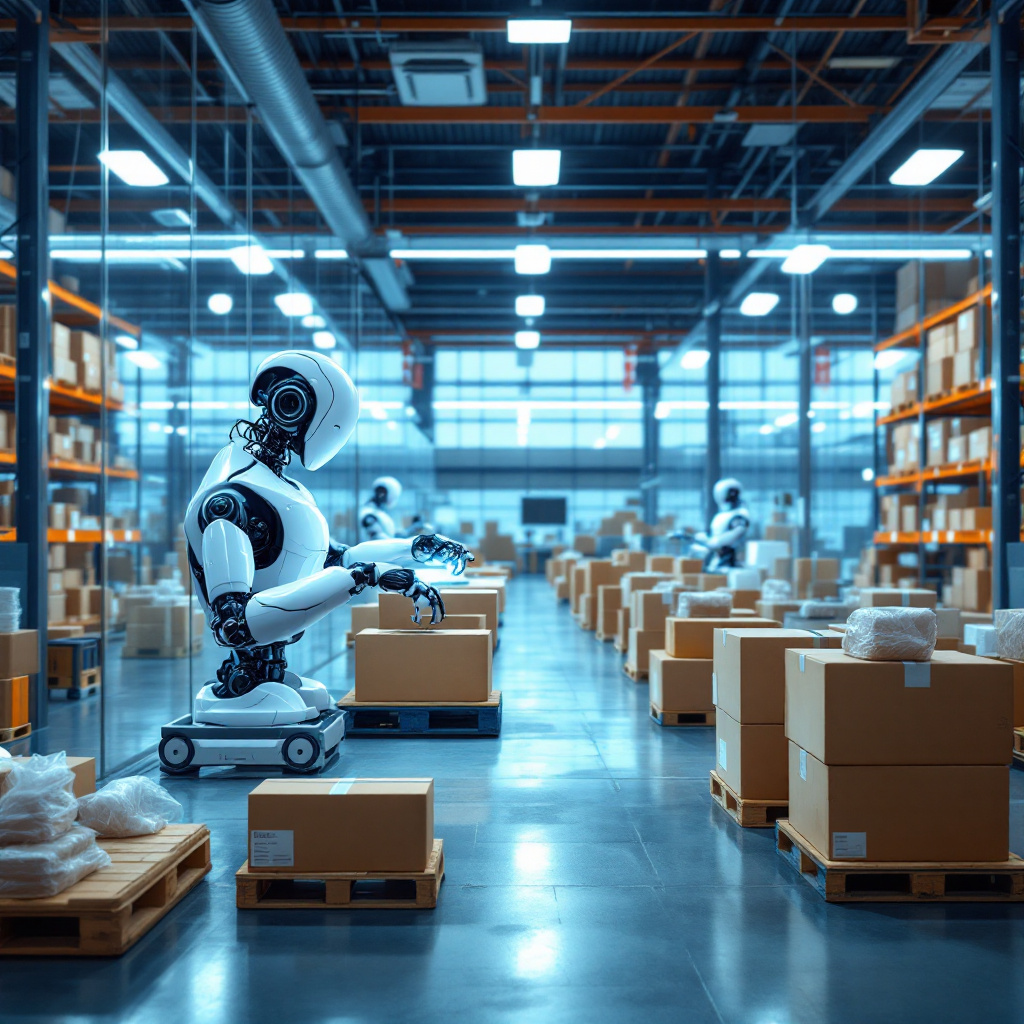Comparing rpa vs ai in the logistics industry
The logistics industry is undergoing a significant transformation due to the rise of advanced automation technologies. Understanding AI and RPA is crucial for any organisation seeking to improve efficiency and accuracy across operations. RPA refers to the use of software robots that follow a rule-based approach to automate structured, predictable, and repetitive tasks such as data entry, order tracking, and reporting. In contrast, AI refers to artificial intelligence systems capable of learning from data, identifying patterns, making predictions, and supporting decision-making in complex environments.
The core difference lies in adaptability and scope. While RPA automates fixed workflows without human cognitive skills, AI can analyze unstructured data, learn from past cases, and adjust strategies dynamically. For example, RPA may speed up invoice processing or compliance reporting, whereas AI algorithms optimise delivery routes based on real-time traffic, weather, and demand changes.
Industry statistics highlight the performance gap in certain areas. Companies that use RPA have achieved a 40–60% reduction in processing time for administrative workloads, alongside operational costs falling by up to 30%. On the other hand, organisations using AI for predictive analytics see 20–30% increases in forecasting accuracy, driving better inventory decisions.
AI can work alongside RPA, enabling logistics operations to handle both structured and unstructured information flows. This combination of RPA and AI supports automation across core processes, blending speed with analytical depth. Businesses aiming for efficient logistics can benefit from solutions that merge the quick execution of RPA tools with the advanced problem-solving of AI systems. For further examples of how AI handles repetitive tasks in logistics, see this detailed breakdown of AI in repetitive workflows.

rpa implementation and automation with rpa in supply chain
RPA implementation in supply chain management starts with identifying processes that are highly structured and involve repetitive tasks. Process automation involves mapping workflows, configuring bots, running test phases, and monitoring performance after launch. The focus is on selecting the right automation for maximum impact.
Automation with RPA is especially effective in handling invoice processing, updating inventory records, and managing compliance documentation. For example, an RPA bot can automate the extraction of shipment details from scanned documents using intelligent document processing and then post updates into an ERP system. This reduces errors and speeds up operational cycles.
Companies that leverage RPA to streamline such processes often report increased operational efficiency and cost savings. Figures show up to 30% cost reductions and a noticeable drop in transaction errors when replacing manual work with RPA solutions. RPA automates tasks such as data entry with precision, ensuring reliable information flow across departments. The ability to automate means RPA can also free teams from low-value work, allowing them to focus on higher-impact goals.
RPA workflows integrate seamlessly with automation software and enterprise systems without human intervention. By connecting across platforms, RPA software maintains data consistency and supports end-to-end automation. For further insight into how AI complements RPA in supply chain processes, see this overview of AI-powered customer service in the supply chain.
Drowning in emails? Here’s your way out
Save hours every day as AI Agents draft emails directly in Outlook or Gmail, giving your team more time to focus on high-value work.
ai in supply chain: agentic ai and ai agents for predictive logistics
AI in supply chain contexts uses predictive modelling, anomaly detection, and proactive maintenance strategies to ensure smooth logistics operations. Cutting-edge AI applications tap into diverse datasets to forecast demand more accurately, anticipate disruptions, and streamline warehouse management.
Agentic AI represents a new frontier, where AI agents act with a high degree of autonomy. These agents learn operational patterns, adapt to changes, and recommend optimisations without constant human input. For example, AI agents can react in real time to demand spikes by adjusting stock allocations and rerouting delivery fleets.
AI provides advanced capabilities that RPA cannot match in certain scenarios. AI can significantly enhance decision-making by factoring in variables such as fuel prices, road closures, and weather events. AI can analyze historical and live data to produce forecasts that guide purchasing, staffing, and transportation schedules. The potential of AI in predictive logistics lies in its ability to prevent costly delays and overstock situations.
Enterprises deploying AI in these roles are achieving measurable benefits. Demand spikes that once caused bottlenecks can now be managed seamlessly with predictive AI models. This not only improves supply chain operations but also contributes to customer satisfaction. For real-world case studies on such deployments, you can review examples of AI automation in logistics processes.

robotic process automation for business process optimisation using automation software
Robotic process automation plays a central role in business process optimisation. By eliminating repetitive manual steps, organisations increase process speed and consistency. RPA automates order entry, shipment tracking, and compliance reporting, supporting operational efficiency and accuracy targets.
Integration with ERP through automation software ensures data is updated across all relevant systems in near real time. When RPA handles data flows directly, the need for manual intervention is reduced, accelerating workflows. One major courier service that implemented RPA tools for document handling reduced document-related errors by 50%, highlighting the operational benefits.
Like robotic process automation, other automation solutions remove the human element from repetitive workflows, allowing resources to be redeployed to analytical or client-facing tasks. RPA may not manage complex decision-making, but it excels at high-volume, rules-based assignments. The combination of RPA with AI capabilities transforms traditional automation into a more adaptive, intelligent approach to enterprise automation.
Businesses aiming to automate operations should consider how RPA systems and automation software can integrate with AI solutions. This synergy supports more sophisticated task automation, blending speed with adaptability. To explore alternative automation applications within freight forwarding, visit this guide on automation alternatives.
Drowning in emails? Here’s your way out
Save hours every day as AI Agents draft emails directly in Outlook or Gmail, giving your team more time to focus on high-value work.
intelligent automation: rpa and intelligent automation in supply chain and logistics
Intelligent automation merges RPA with AI, enabling automation of both structured and unstructured workflows. In supply chain and logistics contexts, this allows companies to automate data collection while applying cognitive automation for analysis and optimisation.
A practical example is when an RPA bot gathers shipment data from multiple sources and AI uses that data to optimise delivery routes in real time. This approach drives operational efficiency and cost savings by cutting delays, lowering fuel use, and enhancing service reliability. RPA and intelligent automation together deliver end-to-end automation, from input capture to advanced analytics.
Industry forecasts indicate that such systems will automate up to 45% of logistics processes by 2030. Companies adopting these methods position themselves ahead in supply chain management by creating more resilient and responsive networks.
Intelligent automation vs RPA highlights the expanded automation capabilities that come when you pair the precision of RPA with the adaptability of AI. While RPA handles the how of repetitive processing, AI solutions support strategic planning and forecasting. This is automation brings a future-facing approach to supply chain operations, supported by automation technologies built to evolve.
evolution of automation: from rpa to intelligent automation in automation systems
The evolution of automation within automation systems has moved from simple scripts to sophisticated AI-driven processes. Initially, RPA automates routine, clearly defined workflows. Over time, advancements such as cognitive automation and rpa with ai have led to systems that can learn and self-adjust.
This progression from RPA to intelligent automation reflects a shift in automation capabilities. The latest phase, driven by rpa and agentic AI, introduces the agentic process automation system, which adapts to changes in supply chain challenges automatically. AI can work fluidly with RPA software, enabling more responsive supply chain and logistics networks.
Companies on the automation journey are aiming for agile, multi-functional automation systems. The right automation strategy will combine RPA solutions with AI capabilities for long-term resilience and value creation. Combining RPA and AI turns traditional automation into an adaptive toolset that manages exceptions and recommends process changes proactively.
This development promises operational efficiency and cost savings, more robust risk management, and the ability to automate complex workflows without human oversight. As automation means more than labour replacement, the future of enterprise automation is about strategic enhancement of supply chain operations.
FAQ
What is the main difference between RPA and AI?
RPA is rule-based and automates structured, repetitive tasks. AI is adaptable, learns from data, and supports complex decision-making.
Can RPA operate without human involvement?
Yes, once configured, RPA can automate structured workflows without human intervention. Monitoring is only required for exceptions or updates.
How does AI benefit logistics operations?
AI enables predictive analytics, optimises routing, and improves demand forecasting. These capabilities reduce costs and enhance customer satisfaction.
Is intelligent automation better than RPA alone?
Intelligent automation combines RPA with AI, allowing both structured and unstructured processes to be automated. This leads to broader functionality and flexibility.
What kind of tasks are best suited for RPA?
Repetitive tasks such as data entry, invoice processing, and order tracking are ideal. RPA excels at high-volume and rules-driven activities.
Do AI agents require constant supervision?
No, AI agents can operate autonomously in areas like predictive logistics. They adapt to data changes and make recommendations without constant human input.
Can RPA improve accuracy in business processes?
Yes, RPA significantly reduces human errors in business processes. Automated workflows ensure consistent and precise execution of defined tasks.
How quickly can RPA be implemented in supply chain management?
Depending on process complexity, basic RPA deployment can be completed within weeks. It typically starts delivering value soon after launch.
What is the role of AI algorithms in supply chain forecasting?
AI algorithms analyse historical and real-time data to improve forecast accuracy and adjust plans dynamically in reaction to market changes and disruptions.
Will automation technologies replace human workers entirely?
No, automation technologies aim to augment human capabilities. They free staff from low-value work, allowing focus on strategy, creativity, and customer relations.
Ready to revolutionize your workplace?
Achieve more with your existing team with Virtual Workforce.